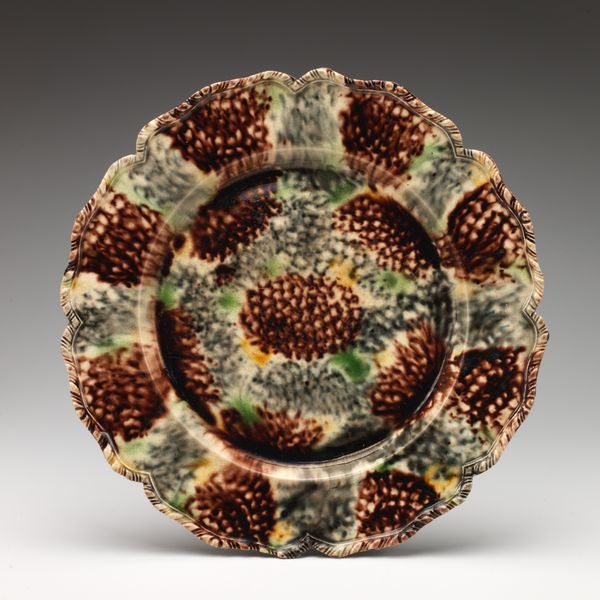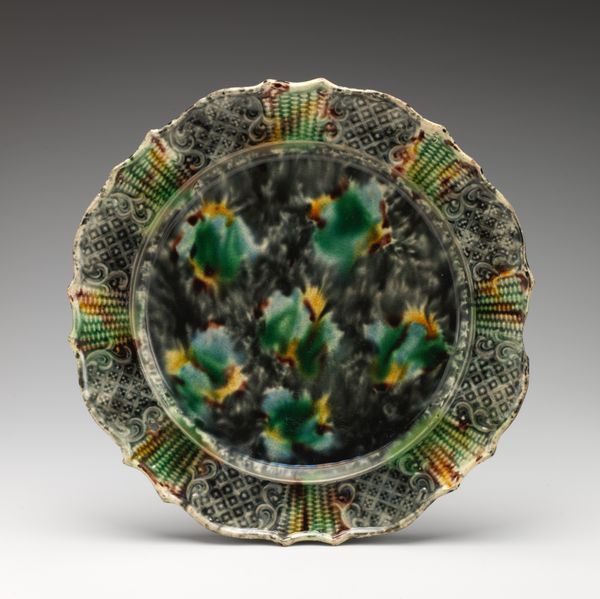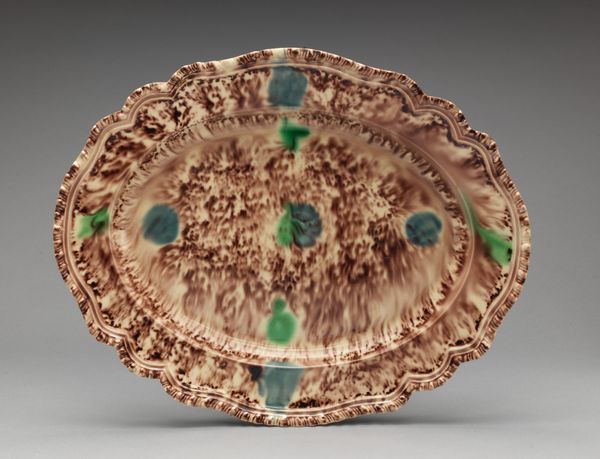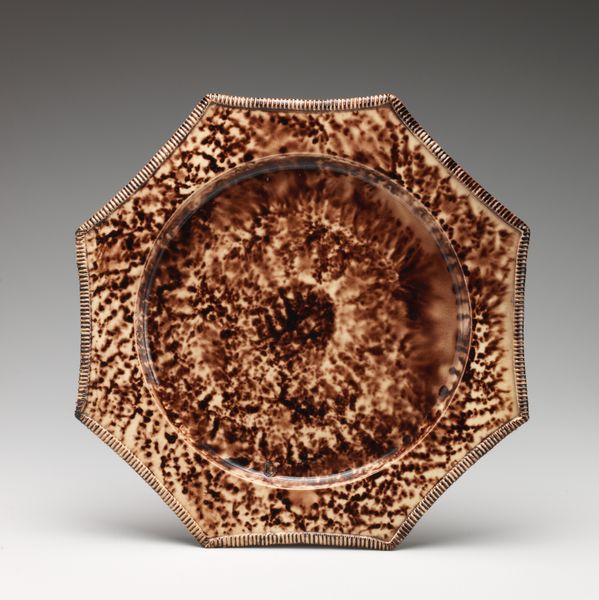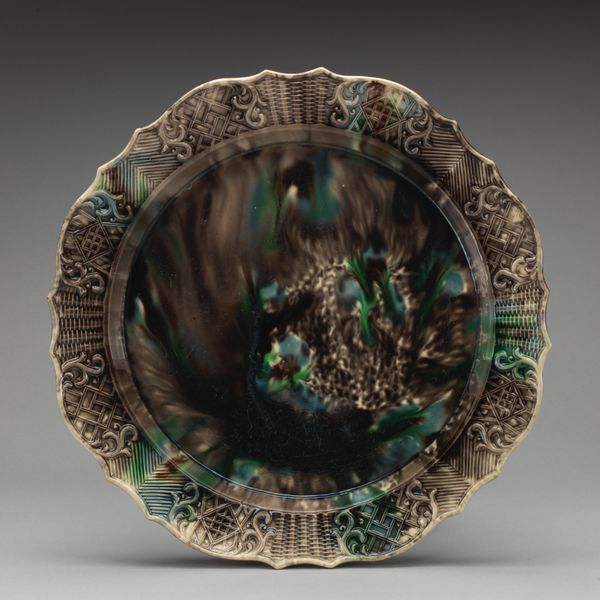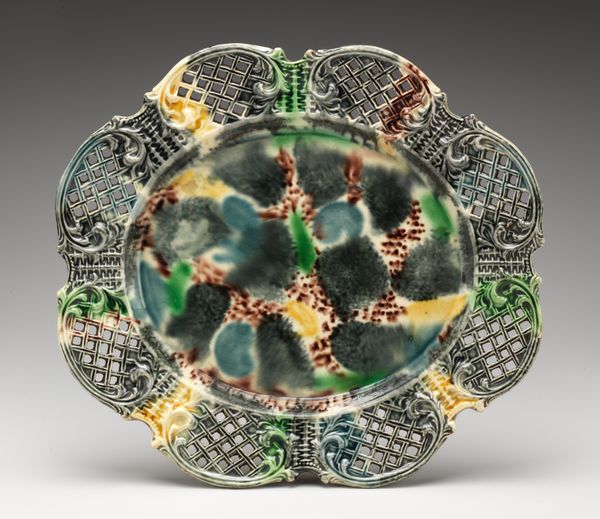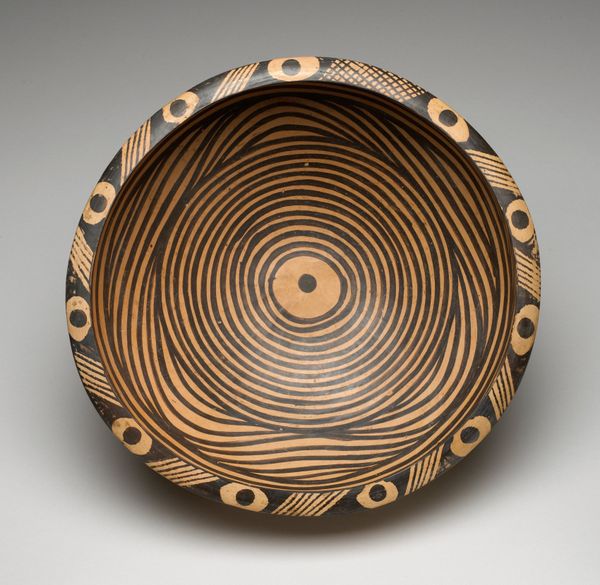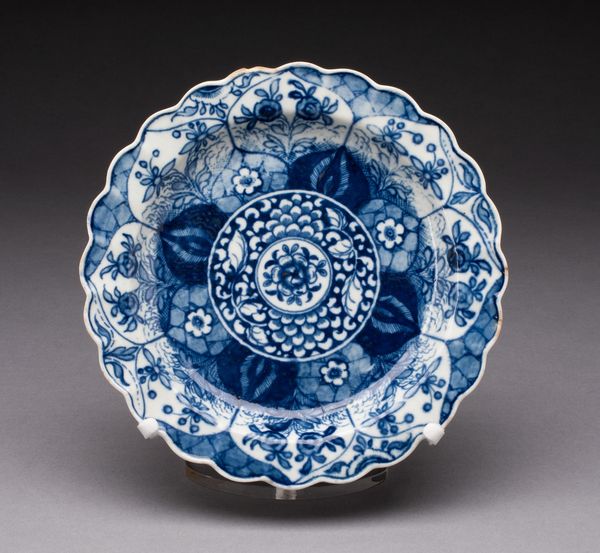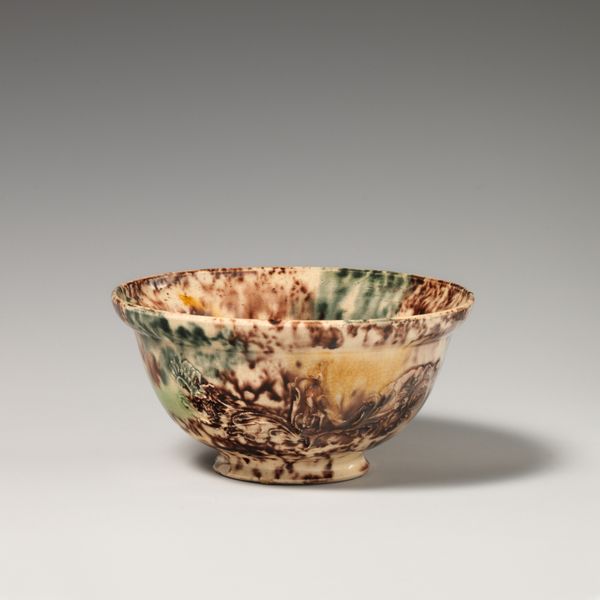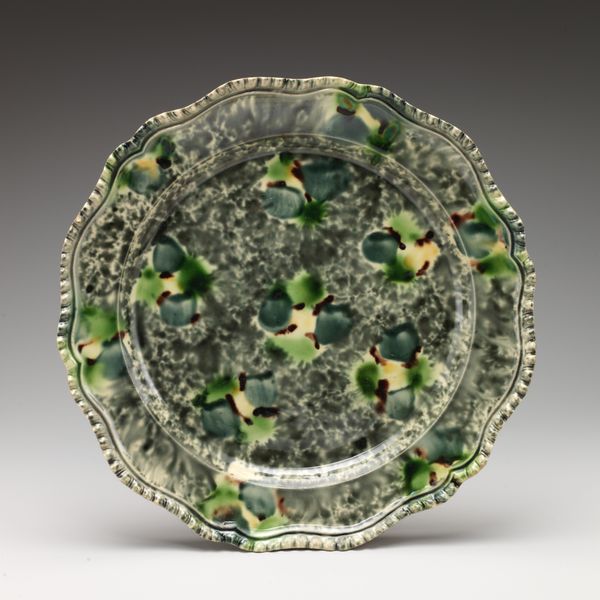
ceramic, earthenware, sculpture
#
ceramic
#
form
#
earthenware
#
geometric
#
sculpture
#
ceramic
#
decorative-art
#
rococo
Dimensions: Diameter: 9 3/8 in. (23.8 cm)
Copyright: Public Domain
Curator: This striking “Soup plate” is an example of Whieldon-type earthenware, crafted sometime between 1745 and 1775. You can find it here at the Metropolitan Museum of Art. Editor: It's really quite arresting. The first thing I notice is this almost marbled effect in the center, and the juxtaposition of those bold greens with the more subdued earth tones. It almost feels…alive? Curator: Indeed, Whieldon ware is characterized by its colorful glazes, achieved through innovative techniques involving metallic oxides. This plate reflects the Rococo era’s fascination with natural forms and asymmetrical designs. Pieces like these became accessible symbols of status and taste within the burgeoning middle classes of the 18th century. Editor: It makes me wonder about accessibility. Who exactly was consuming soup from a plate like this? Beyond the emerging middle class, were these truly attainable for laboring families, or did even these decorative objects maintain social hierarchies? And I love that Rococo is evoked! Despite this dish having simple form, you see this interest in elaborate ornamental presentation and material excess. Curator: That's an interesting point. While Whieldon-type earthenware made decorative pieces more accessible, true equity was, of course, another matter entirely. One has to consider the complex socio-economic structures that enabled the production and consumption of such wares. The expansion of colonial trade provided access to raw materials and fuels the ceramic industry in England. Editor: Yes, understanding the material history becomes essential to unraveling a story beyond aesthetics and domestic comfort. Examining the history of resources can expose how these seemingly innocuous plates are interwoven with the exploitation and colonial ambition of the era. I would propose that such beauty could blind its owners to the cost. Curator: Absolutely. Seeing the interplay between decorative object and socio-political context enriches our understanding, doesn't it? Editor: For sure. Now when I look at it I see the promise and deception of rococo excess at the table!
Comments
No comments
Be the first to comment and join the conversation on the ultimate creative platform.
